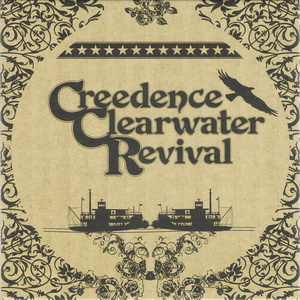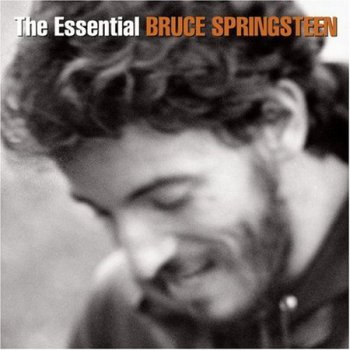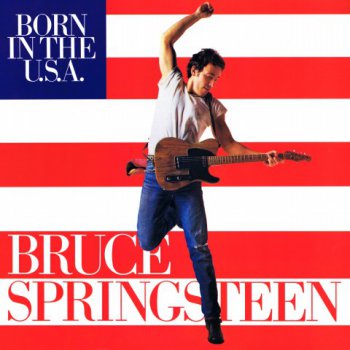Beat - Neon Heat Disease - Live In Los Angeles (2025) 2CD
Artist: Beat Title Of Album: Live In Los Angeles Year Of Release: 2025 Label (Catalog#) :Inside Out Music IOM756 Country:: USA Genre: Prog Rock Quality: FLAC (tracks+log) Bitrate: Lossless Time: 44:24+66:38 Full Size: 755Mb(+3%)(covers) Upload: xfile.cloud Legendary former King Crimson members Adrian Belew and Tony Levin banded together with guitar virtuoso Steve Vai and explosive Tool drummer Danny Carey to create BEAT, a creative reinterpretation of the three iconic 1980s King Crimson albums

Beat - Neon Heat Disease - Live In Los Angeles (2025) 2CD
Artist: Beat Title Of Album: Live In Los Angeles Year Of Release: 2025 Label (Catalog#) :Inside Out Music IOM756 Country:: USA Genre: Prog Rock Quality: FLAC (tracks+log) Bitrate: Lossless Time: 44:24+66:38 Full Size: 755Mb(+3%)(covers) Upload: xfile.cloud Legendary former King Crimson members Adrian Belew and Tony Levin banded together with guitar virtuoso Steve Vai and explosive Tool drummer Danny Carey to create BEAT, a creative reinterpretation of the three iconic 1980s King Crimson albums
10 10, 2025
Sky: 2018 The Studio Albums 1979-1987 / 8-Disc Box Set Esoteric Recordings
Lossless Galaxy Release Sky: 2018 The Studio Albums 1979-1987 8-Disc Box Set Esoteric Recordings Performer: Sky Box Set / Albums: 2018 The Studio Albums 1979-1987 1979 Sky ● 1980 Sky 2 ● 1981 Sky 3 ● 1982 Sky 4 Forthcoming 1983 Cadmium ● 1985 The Great Balloon Race ● 1987 Mozart 2002 Live In Nottingham 1990 DVD (8-Disc Box Set Esoteric Recordings) Info: Cherry Red Records / Esoteric Recordings Catalog Box: ECLEC 82622 Catalog Discs: ECLEC ECLEC 82622/CD1~CD7 • ECLEC 82622/DVD8 Made in EU

Sky: 2018 The Studio Albums 1979-1987 / 8-Disc Box Set Esoteric Recordings
Lossless Galaxy Release Sky: 2018 The Studio Albums 1979-1987 8-Disc Box Set Esoteric Recordings Performer: Sky Box Set / Albums: 2018 The Studio Albums 1979-1987 1979 Sky ● 1980 Sky 2 ● 1981 Sky 3 ● 1982 Sky 4 Forthcoming 1983 Cadmium ● 1985 The Great Balloon Race ● 1987 Mozart 2002 Live In Nottingham 1990 DVD (8-Disc Box Set Esoteric Recordings) Info: Cherry Red Records / Esoteric Recordings Catalog Box: ECLEC 82622 Catalog Discs: ECLEC ECLEC 82622/CD1~CD7 • ECLEC 82622/DVD8 Made in EU
10 10, 2025
Creedence Clearwater Revival: 40th Anniversary Editions Box Set ● Vinyl Sleeves Replicas ● 7CD Box Set Fantasy Records
Lossless Galaxy Release · Creedence Clearwater Revival: 40th Anniversary Editions Box Set · · Vinyl Sleeves Replicas · 7CD Box Set Fantasy Records · Исполнитель: Creedence Clearwater Revival Box: 40th Anniversary Editions Box Set (7CD Box Set Fantasy Records) Альбомы: 1968 Creedence Clearwater Revival ۞ 1969 Bayou Country 1969 Green River ۞ 1969 Willy And The Poor Boys 1970 Cosmo's Factory ۞ 1970 Pendulum ۞ 1972 Mardi Gras Информация: 7 x CD, Album, Original Recording Remastered, Box Set,

Creedence Clearwater Revival: 40th Anniversary Editions Box Set ● Vinyl Sleeves Replicas ● 7CD Box Set Fantasy Records
Lossless Galaxy Release · Creedence Clearwater Revival: 40th Anniversary Editions Box Set · · Vinyl Sleeves Replicas · 7CD Box Set Fantasy Records · Исполнитель: Creedence Clearwater Revival Box: 40th Anniversary Editions Box Set (7CD Box Set Fantasy Records) Альбомы: 1968 Creedence Clearwater Revival ۞ 1969 Bayou Country 1969 Green River ۞ 1969 Willy And The Poor Boys 1970 Cosmo's Factory ۞ 1970 Pendulum ۞ 1972 Mardi Gras Информация: 7 x CD, Album, Original Recording Remastered, Box Set,
10 10, 2025
Жанры
Lossless Galaxy Release
Русская музыка
--Поп
--Рок
--Панк
--Альтернатива
--Металл
--Рэп, Хип-Хоп, R'n'B
--Джаз и Блюз
--Фолк
--Шансон, Авторская песня
--СССР
Зарубежная музыка
--Pop
--Rock
--Hard Rock
--Progressive & Art-Rock
--Pop-Rock & Soft Rock
--Instrumental Rock
--Heavy, Traditional, Industrial Metal
--Power, Gothic, Sympho Metal
--Thrash, Speed, Groove, Modern Metal
--Death, Melodic Death, Doom, Dark Metal
--Black, Pagan, Folk, Viking Metal
--Alternative
--Punk
--Disco, Eurodance
--Rap, Hip Hop, R'n'B
--Reggae, Ska, Dub
--Jazz, Blues, Soul
--Folk, Country, Ethnic
--Electronic, Ambient, New Wave
--House, Techno, Trance
Другие жанры
--New Age, Relax, Meditative & Flamenco
--Chillout, Lounge, Downtempo, Trip-Hop
--Drum & Bass, Jungle, Breakbeat, IDM
--Classical / Классическая музыка
--Soundtrack
--Музыкальные сказки
Vinyl Rip
HI-Res / DVD-Audio / DTS
--SACD
--DSD
--DVD-Audio
Сборники Lossless-Galaxy
Альбомы 2022
Альбомы 2023
Альбомы 2024
Теги
1st Press 2022 2023 2024 2025 70... AOR Black Metal Blues Blues Rock Bootleg Series Classic Rock Death Metal Discography Exclusive for Lossless-Galaxy Folk Rock Fusion Hard Rock Heavy Metal Hi-Res Japanese Edition Jazz Jazz Rock lossless Melodic Death Metal Melodic Rock Modern Electric Blues Pop Pop Rock Power Metal Prog Rock Progressive Metal Progressive Rock Psych Rock Psychedelic Rock Rock SACD Symphonic Metal Thrash Metal Дискографии от KoGGaN
Архивы
Опрос
В каком формате хотели бы видеть релизы на сайте ?
 Автор: artmuss, 25 декабря 2018, Комментариев: 0, Просмотров: 631
Автор: artmuss, 25 декабря 2018, Комментариев: 0, Просмотров: 631Bruce Springsteen - 1979-09-21 Madison Square Garden New York, NY (2018) [Hi-Res]
Artist: Bruce Springsteen
Title Of Album: 1979-09-21 Madison Square Garden New York, NY
Year Of Release: 2018
Label: Self Released
Country: United States
Genre: Rock, Folk Rock, Heartland Rock, Classic Rock, Singer-Songwriter
Quality: FLAC (tracks)
Bitrate: Lossless [24bit-176kHz]
Time: 2:51:39
Full Size: 6.01 gb
Upload: Turbobit
Title Of Album: 1979-09-21 Madison Square Garden New York, NY
Year Of Release: 2018
Label: Self Released
Country: United States
Genre: Rock, Folk Rock, Heartland Rock, Classic Rock, Singer-Songwriter
Quality: FLAC (tracks)
Bitrate: Lossless [24bit-176kHz]
Time: 2:51:39
Full Size: 6.01 gb
Upload: Turbobit
:: TRACKLIST ::
1979-09-21:
Prove It All Night (5:50)
Badlands (5:38)
The Promised Land (6:36)
The River (7:03)
Sherry Darling (7:39)
Thunder Road (5:35)
Jungleland (10:37)
Rosalita (Come Out Tonight) (11:41)
Born to Run (5:28)
Stay (4:10)
Detroit Medley (9:59)
Rave On! (3:13)
1979-09-22:
Prove It All Night (6:35)
Badlands (6:17)
The Promised Land (6:57)
The River (6:41)
Sherry Darling (8:15)
Thunder Road (5:56)
Jungleland (10:42)
Rosalita (Come Out Tonight) (12:52)
Born to Run (6:11)
Stay (4:47)
Quarter To Three (12:58)
Bruce Springsteen - Lead vocals, guitar, harmonica
Roy Bittan - Piano
Clarence Clemons - Tenor and baritone saxophones, percussion, backing vocal;
Danny Federici - Organ, glockenspiel
Garry Tallent - Bass
Stevie Van Zandt - Guitar, backing vocal
Max Weinberg - Drums
Additional Musicians:
Jackson Browne - Co-lead vocal on Stay
Rosemary Butler - Backing vocal on Stay
Tom Petty - Co-lead vocal on Stay (9/22 only)
:: DOWNLOAD LINK ::
Внимание! У Вас нет прав для просмотра скрытого текста.
:: MusicMuss ::
Похожие новости:
Комментарии отсутствуют
Добавить комментарий!
Информация
Посетители, находящиеся в группе Гости, не могут оставлять комментарии к данной публикации.
![Bruce Springsteen - 1979-09-21 Madison Square Garden New York, NY (2018) [Hi-Res] Bruce Springsteen - 1979-09-21 Madison Square Garden New York, NY (2018) [Hi-Res]](/uploads/posts/2018-12/thumbs/1545730867_folder.jpg)

![VA - No Nukes - From The Muse Concerts For A Non-Nuclear Future - Madison Square Garden - 1979 [2HDCD Set] (1997)](/uploads/posts/2018-07/thumbs/1532331123_cover.jpg)


![Bruce Springsteen & The E Street Band - 1980-12-31 Nassau Veterans Memorial Coliseum, Uniondale, NY (2015) [Hi-Res]](/uploads/posts/2016-08/thumbs/1470912675_76655.jpg)